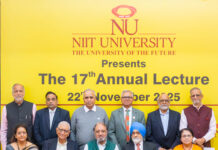Imagine you and your friends are playing your favorite game, let’s say it is cricket. You see the ball and hit it with your bat. The game has a fixed set of rules, so it is easy and simple. It becomes easy for you to explain the rules even to a new player learning the game. Children learn in the same way. The easier the game, the better for them.
Let’s reimagine your favorite game! The only difference is that the rules will change with every player. Let’s say that if Sachin is on the batting end, you cannot bowl a spin. If Bumrah is bowling, then you cannot hit a boundary. Doesn’t matter how many times you caught Kohli, he is always not out! If Dhoni is at the batting end, it will always be considered a boundary whether he hits the ball or not!

Important Announcement – EasyShiksha has now started Online Internship Program “Ab India Sikhega Ghar Se”

Think about this type of game for a moment. Would kids enjoy playing it? We will not be able to get them to love the game even if we practice for 12 years. That’s because they had a chaotic first experience.
I grew up in a small town in MP. I remember that day in the second grade when we had regular reading sessions. There were simple sentences to be read aloud in the class, turn by turn. A few of my friends did an amazing job reading words correctly. They are the ones who are going places today after 25 years. But for the majority of my friends couldn’t get simple words like honest, knife, knee, etc. correct. Slowly I could see the achievement gap that cracked in. The class of 40 friends split into multiple groups of students as time passed. The top 10% were eating together, the bottom 50% playing together, and these groups came to be my classmates for the next 10 years of schooling. The top academic performing group was proud of what they achieved and the bottom quartile was often absent in many activities. Some dropped in the middle. Many of them have given up hopes of improvement. There was so much of an achievement gap.
ALSO READ: Food and Cancer
I started believing that reading skills and academic achievement had much to do with the family backgrounds, economics, geography, and environment of a student. I was told that Learning English was hard. And throughout my years till graduation, I saw millions of students struggling to get better. Everyone was talking about how to improve their skills and get better. They would even take help from professionals to get better. But none of them to date have proven to be a universal and easy method of learning the language. If we look at it from the perspective of a second-grader, reading English is chaotic and complex. There are 97% exceptions in letter-sounds correspondence.
Top Courses in Software Engineering
However, I later discovered that the underlying reason was not what I believed for 30 years! The fundamental reason was the language itself. We were trying to play a game that was full of exceptions. Nobody had a clue how to make it systematic. We fundamentally learned a Phonetically irregular language by applying the methods of Phonics. In the short run, it seemed to work. But studies have shown that nationwide adoption of Phonics in English had a negligible impact in the long run on reading scores. 65% of kids in the US can’t read grade-level books and it is worse for India. Rules and exceptions have added to cognitive load and delayed comprehension.
Can there be a better method? Yes!
Can this method be used to reduce cognitive load and rote learning? Yes!
Can we close this achievement gap and bring equity to our classrooms? Yes!
The TinyIvy Phonics System, or TIPS®, solves the problem. It is scientifically and mathematically based, and endorsed by leading linguists in the world. TIPS®has an extended alphabet which allows for 1-1 correlation between a letter and a sound. There are 9 sounds for the letter A in English, but only 1 A in the alphabet. TIPS® has 9 As, so 9 different sounds! By learning 60 TIPS® characters, a child has the ability to read independently over 99% of the words in the English language. No confusion. No frustration.
Empower your team. Lead the industry
Get a subscription to a library of online courses and digital learning tools for your organization with EasyShiksha
Request NowQ. Are EasyShiksha's internships truly free?
Yes, all internships offered by EasyShiksha are completely free of charge.
Q. How can I apply for an internship with EasyShiksha?
You can apply by visiting our website, browsing available internships, and following the application instructions provided.
Q. What types of internships are available through EasyShiksha?
EasyShiksha offers a wide range of internships across technology, business, marketing, healthcare, and more. Opportunities are continuously updated.
Q. Will I receive a certificate upon completing an internship?
Yes, upon successful completion, you will receive a certificate recognizing your participation and achievements.
Q. Are EasyShiksha's internship certificates recognized by universities and employers?
Yes, the certificates are recognized by universities, colleges, and employers worldwide.
Q. Is the download of certificates free or paid?
Access to internships and courses is free, but there is a small fee to download certificates, covering administrative costs.
Q. When can I start the course?
You can choose any course and start immediately without delay.
Q. What are the course and session timings?
These are fully online courses. You can learn at any time and pace. We recommend following a routine, but it depends on your schedule.
Q. What will happen when my course is over?
After completion, you will have lifetime access to the course for future reference.
Q. Can I download the notes and study material?
Yes, you can access and download course materials and have lifetime access for future reference.
Q. What software/tools would be needed for the course?
All necessary software/tools will be shared during the training as needed.
Q. I’m unable to make a payment. What should I do?
Try using a different card or account. If the problem persists, email us at info@easyshiksha.com.
Q. Do I get the certificate in hard copy?
No, only a soft copy is provided, which can be downloaded and printed if required.
Q. The payment got deducted but shows “failed”. What to do?
Technical errors may cause this. The deducted amount will be returned to your account in 7-10 working days.
Q. Payment was successful but dashboard shows ‘Buy Now’?
Sometimes payment reflection is delayed. If it takes longer than 30 minutes, email info@easyshiksha.com with the payment screenshot.
Q. What is the refund policy?
If you face technical issues, you can request a refund. No refunds are issued once the certificate has been generated.
Q. Can I enroll in a single course?
Yes, select the course of interest, fill in the details, make payment, and start learning. You will also earn a certificate.
Q. My questions are not listed above. I need further help.
Contact us at info@easyshiksha.com for further assistance.
Great solutions require simple visualizations and microscopic detailing. By adding an accent mark or diacritic, English becomes a phonetically regular, easy-to-read language. It doesn’t matter how many sounds a letter can make, by visualizing the exact sound, anybody can learn to decode it correctly and learn to read like a champion. Below is a sample text written in TIPS®:
At TinyIvy, we believe every child can learn equitably, closing the achievement gaps. When the confidence sets in the first place, they can go places. We have a comprehensive and complete school curriculum, classroom tools, books and are technically capable of integrating the system with existing solutions to make them effective. Resources can be accessed online on tinyivy.com
Meghesh, the author of this article is the Vice-President of TinyIvy in India.
He is working to bring equity in classrooms, and quality education for all.
Enroll in 500+ Skill development course from EasyShiksha
ALSO READ: pearson-and-apollo-medskills-join-hands-to-bridge-the-healthcare-skill
Get Course: Java-Tutorial-for-Beginners-Course





































































